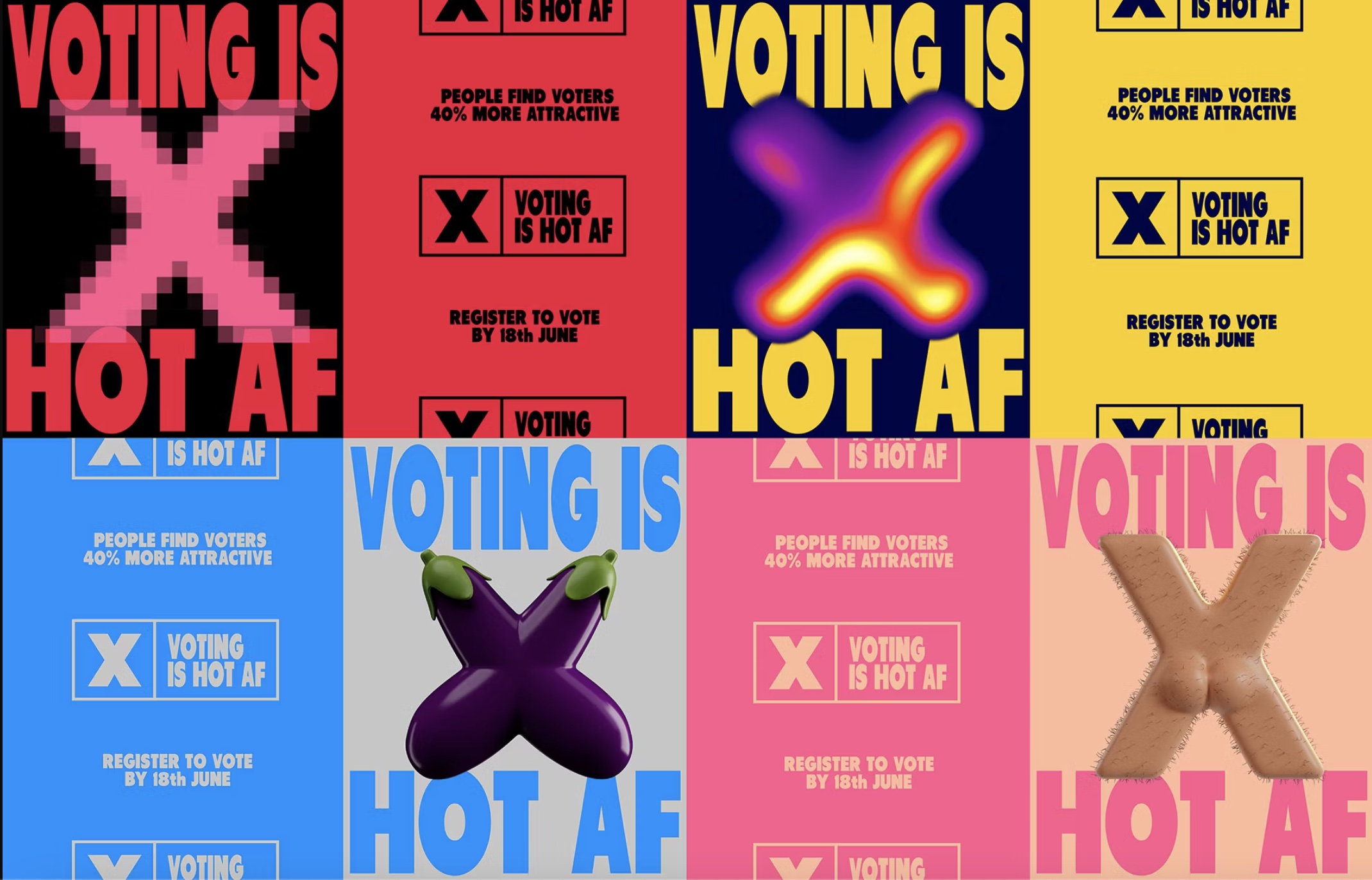"Stay ever curious": a day in the life Eri Panasci
Jelly's executive producer discusses the importance of "allowing space for a bit of uncontrolled, unplanned creative weirdness."
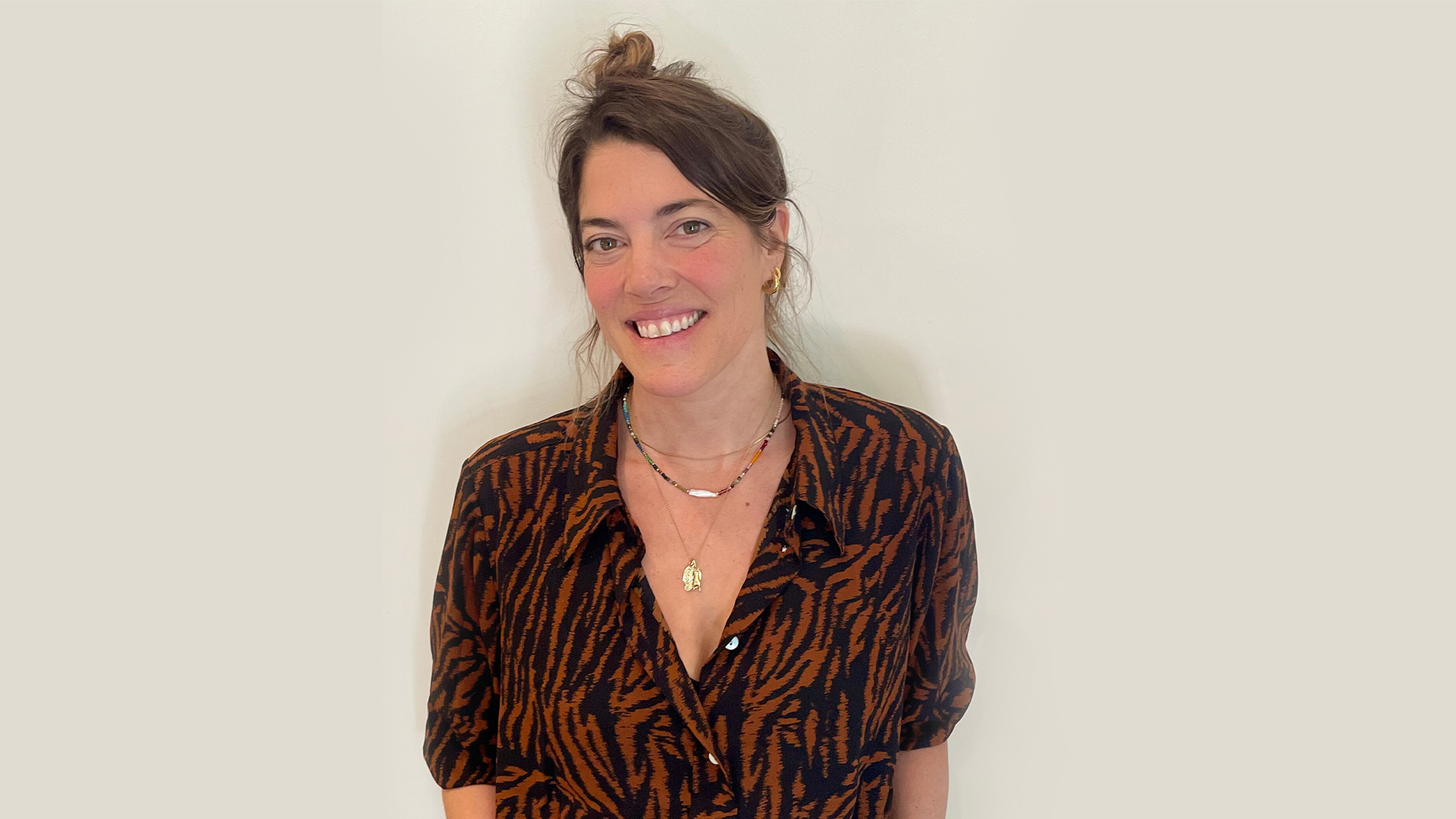
Eri Panasci is executive producer and head of US business development at Jelly – an illustration agency and production company with a passion for solving creative challenges. Beginning her career in agency communications, planning and strategy, Eri soon shifted her focus to the business side of the industry, prompting her return to New York City in 2019 to lead Jelly.
Today Eri's role is shaped by connecting people and ideas, creating a symbiosis between brands and creative partners. As part of our Day in the Life series, I caught up with Eri to discuss the evolution of her career, building a faithful recreation of an English pub in her basement, and the importance of "allowing space for a bit of uncontrolled, unplanned creative weirdness."
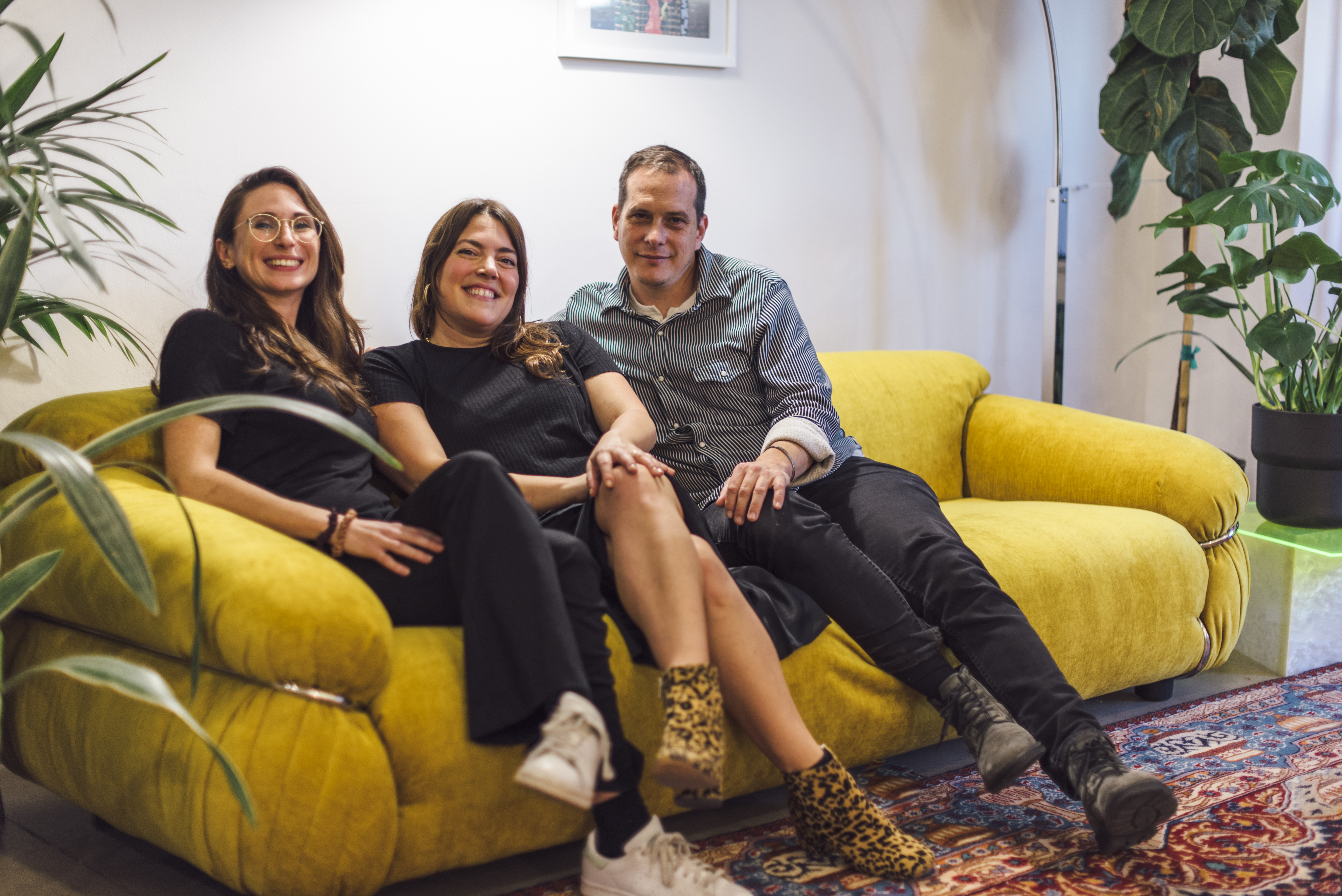
Could you walk me through a typical day in your role?
I wake up around 6:45 am, usually to my toddler’s face staring at me over the edge of the bed. I try not to look at my phone immediately, and instead give him my undivided attention for a while, and cuddle him while he still allows it. We like to play the Rolling Stones during breakfast, dance around a bit, and I generally try to gameify getting him ready and out the door as much as possible – lightly tricking him into doing my bidding whilst thinking it was all his idea… it’s the producer in me. I’ll then get some steps in by walking him to school (and picking up no less than 10 sticks and rocks on the way, because I have birthed a fellow “magpie” of a human, who can’t help but pick up anything remotely curious looking or shiny).
Then, most days, I’ll trot down the hill to the train station and head into the Jelly studio in Tribeca. We live about an hour North of the city in a popular hiking hotspot, so I’ll stare out the window at the mountains and Hudson River for the first 20 minutes or so of the train ride and then I switch to catching up on industry news, emails, and morning Slack messages.
Motherhood really reprogrammed my approach to work-life time management
Once in the studio, I’ll sync up with my NY production team to get a top level update on live projects, we’ll lovingly battle over who will control the office Sonos that day, then I’ll jump into Zoom meetings with our global team members or post up on the couch to do a few hours of head-down work (I’m a habitual couch creature, who needs coziness to operate at my best, which has resulted in coworkers gifting me with a snazzy pair of “studio slippers” that I immediately step into upon entering the office).
On a good day, I’ll grab lunch or a cheeky happy hour cocktail with a pal in the industry before heading back to Grand Central. Once the kid is home from daycare, the night is a bit of a blur, but I always check my work calendar at the end of each day to make sure I’m aware of my schedule the following day, so that early morning meetings don’t sneak up on me. Motherhood really reprogrammed my approach to work-life time management, and I strive to give each aspect of life my “all” when I’m in the moment.
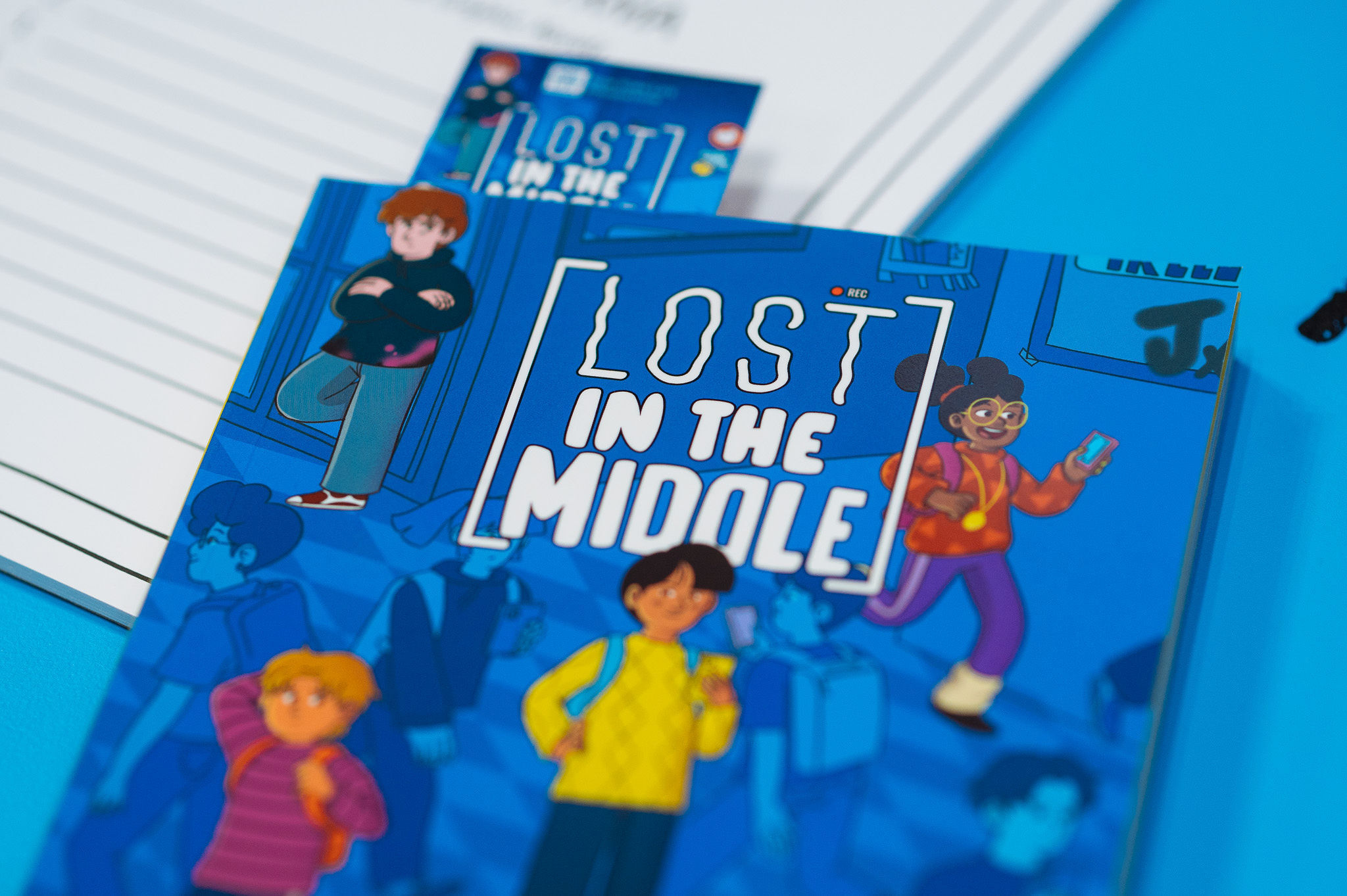
What was your early career like?
I studied Business, specifically ‘International Management & Marketing’ at Boston University, all the while wistfully looking across the street at the ‘College of Communications’ building without the guts to officially change my major to ‘Advertising.’ Instead, I tailored my curriculum and work experience toward Advertising as much as possible, landing at a brilliant boutique agency there called AMP Agency, in an internship which transitioned into a full-time Account Manager position before I even graduated.
I then followed a whim and moved to San Francisco, where I landed at McCann, before moving back to NY a few years later and making the transition to the Production side of the business, to align myself more with my personal passion of collaborating with and empowering creatives.
I recall moments of hesitation throughout my earlier career where I doubted these leaps I was making
I initially worked in the Illustration world, before gravitating to the Animation/Motion side of the business, where my love of narrative storytelling really flourished. When my husband & I moved to London in 2015 to be closer to his family, I immediately stalked Chris Page & Charlie Sells of Jelly, having long been a fan, and convinced them that they needed a loud American amongst the ranks. I worked in the London studio for 3 glorious years, fell completely head over heels for the uniquely special company culture and ethos of Jelly, and moved back to the States in early 2019 to open our Jelly NY studio - and the rest is history in the making.
I recall moments of hesitation throughout my earlier career where I doubted these leaps I was making, but over time it’s become crystal clear to me that following my passion, and aligning that which gets my blood pumping and my wheels turning as closely as possible with how I make a living would never lead me astray.
I look back now and see how different aspects of my varied roles along the way and my exposure to different disciplines within the industry have helped to shape the unique skillset that enables me to be an Executive Producer. You truly do have to be able to “speak multiple different creative languages” in this role, communicating effectively and empathetically with your clients and your talent, always steering the ship to achieve the outcome that’s going to leave the most people feeling satisfied.
Tell me about a tricky work-related challenge and how you approached it
It’s hard to name just one, but generally speaking, once a project is awarded and gets going, the original creative intent that was pitched in the treatment will inevitably need to bend to and work alongside the broader client objectives, which can often meld the creative approach.
My job is to help preserve the creative integrity of a project, whilst simultaneously working to meet the business objectives of the client, in as equal measure as possible. It’s an active game of strategy; you’re listening, you’re preemptively putting checks and balances into place, you’re reacting on behalf of both the client and your talent in real time, you’re helping to “translate” intentions between all parties, onboard the different opinions and then take a look at it all from a few hundred feet out to determine a path of action. But, when you get it right, man is it rewarding.
As a female in this role, and part of a female-managed company, I do feel that some inherent aspects of empathy, emotional intelligence, keen listening skills, and communication style do give me a distinct advantage in this arena.

What’s one thing you wish more people understood about being an executive producer?
You’re a neutral party, a mediator of sorts, acting on behalf of multiple “clients” at one time – all of whose best interests you need to keep in mind. The agency or brand client, the creative talent who have signed on to bring the brand story to life, and the team of creative specialists supporting them – these are all of my “clients” to whom I have an obligation to. So every decision you’re making needs to have the well-being of all parties in mind, and cannot just override the needs of one or more parties because it’s the path of least resistance.
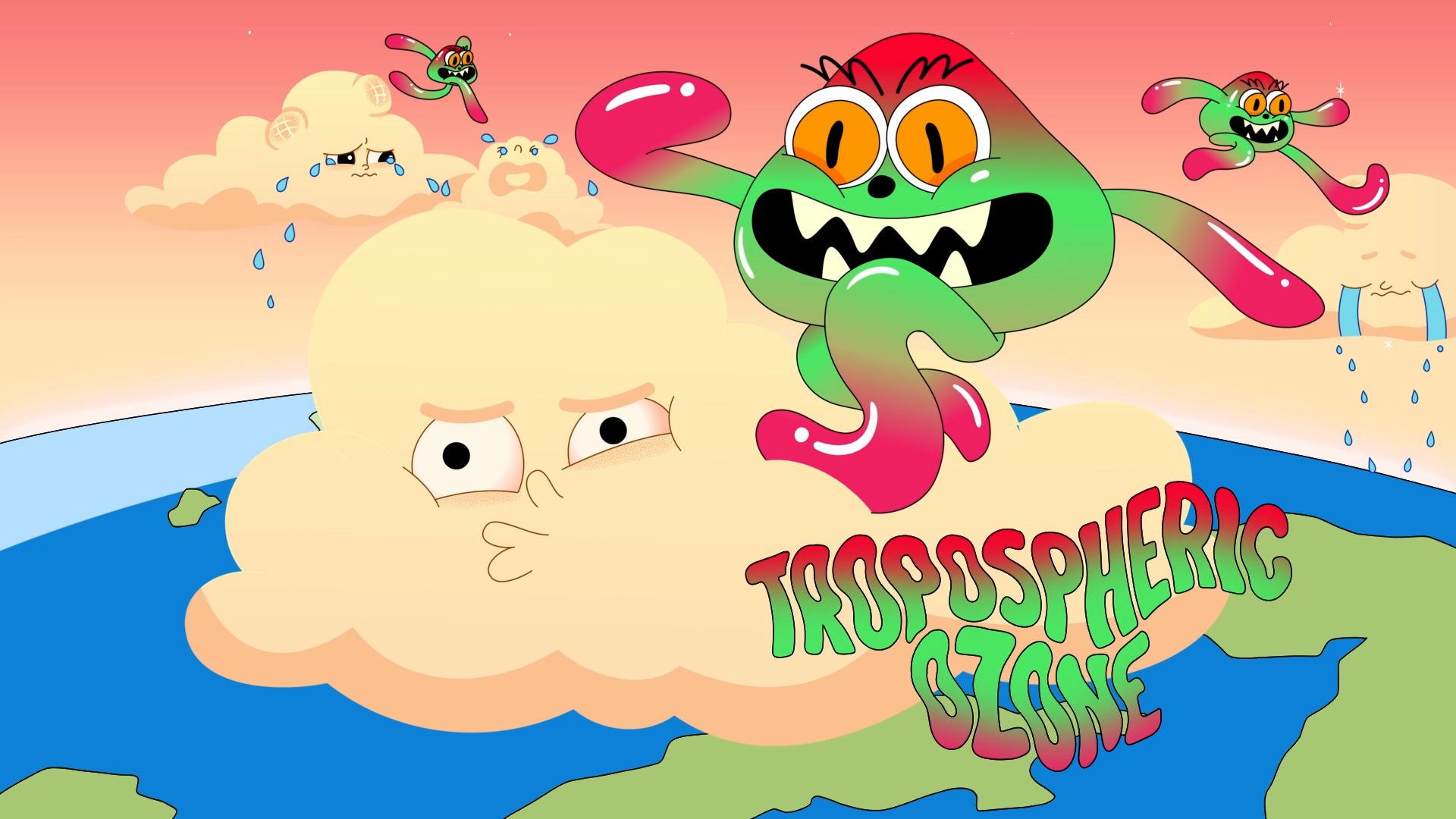
You’ve spoken about your “ability to speak both “Client” and “Creative” – what do you think is key to good communication?
Remembering to be human, above all. It’s so essential to keep any one individual from being demonized or made a scapegoat, which can be the natural inclination when frictions arise. But, you have to remember that everyone is fighting their own battle – your clients are inevitably reporting to their own bosses, who in turn are reporting to their board, who are in turn responsible to their stakeholders – your director is acting on behalf of their creative integrity and the interest of their team of specialists – and we as a production company are working under an agreed scope or work for each project. At times, these interests are somewhat at odds, so it’s hugely important to make sure everyone understands the real motivations behind the other sides’ feedback or requests.
You have to remember that everyone is fighting their own battle
People naturally fear or buck against what they don’t understand, so pulling back the curtain for each party to understand the origin of the ask is critical. You’re much more likely to reach an amicable solution if all partners at least feel like we share the same goal of making a beautiful piece of work, on time and on budget.
Get the Creative Bloq Newsletter
Daily design news, reviews, how-tos and more, as picked by the editors.
Which project are you most proud of and why?
It’s hard to pick just one baby, but one standout was the ‘Lost in the Middle’ campaign we did with Anomaly NY and the New York Life Foundation. With a background in more traditional media, I love a full spectrum project that includes the whole myriad of content types: long format animation, social activations, OOH, print (in this specific project’s case, a graphic novel!), live events… and the unique challenge that producing those multiple work streams presents.

Tell me about creating a traditional London pub in your basement! Do you think it’s important to flex your creative muscles outside of the workplace?
Oh yea! I didn’t fully understand what my British partner meant by “pub culture” before living in London myself. It’s just… one of a kind. Is it a bar? Not entirely. A social club? Kinda sorta. A brunch spot? Sure. A child-friendly destination? Heck yes. So, when we were facing the prospect of moving back to the States and leaving some of our most beloved neighbourhood pubs behind, we knew we’d have to magic up our own solution. And so The Starker’s Arms was born.
She’s a little beaut, executed as faithfully as possible to the traditional British pub template as we could achieve, down to the optics behind the bar, the Scampi chips on the wall, and the authentic British-style ale we have brewed up the road in Glenham, and the pull-tap we installed behind the bar.
In a business that is largely conducted over digital devices, it’s so essential to get hands-on sometimes, to have your own passion projects, to try and fail a bit, to work at something until you physically ache, and ideally, to create a physical manifestation of an idea that you can then look back at and think “how the hell did I do that?” Plus… I just love hosting, entertaining, throwing a spontaneous party… all without leaving my own home, which an in-house pub is highly conducive to.
What inspired you to open your plant shop/co-working space WYLD? Should we be rethinking the traditional office environment?
During the pandemic, we all started to look around at our own four walls, out of necessity, and think about how we could create more beautiful, serene, productive enclaves for ourselves in a place that was previously reserved for eating, sleeping, and lounging. And with this shift to remote working, our ways of working also shifted. We’re able to listen to the rhythms of our own creative instincts a bit more and dictate with a higher degree of autonomy how and when we are working, and I think that’s truly brilliant, because we hit our individual peaks of clarity and productivity at different times in the day.
Freedom to meld your work setting to match your current needs and workload is so important
So, I wanted to provide our community with a fairly self-service place they could access on their own at any time, devoid of distraction, and full of plants and calming sensory cues. The desks were sanded down planks made from a local fallen tree, the art was abstract and open to interpretation (and a little bit cheeky), there was a mix of soft and hard seating, an array of plants that created natural barriers between work stations, and a restored phone booth to provide privacy for the occasional call, as needed.
I sometimes find myself cycling between the couch, my desk, a kitchen countertop, and a table out in the sun, all in one day. I think this freedom to meld your work setting to match your current needs and workload is so important, and the trust and autonomy employers now extend to their employees is so much more humane and respectful.
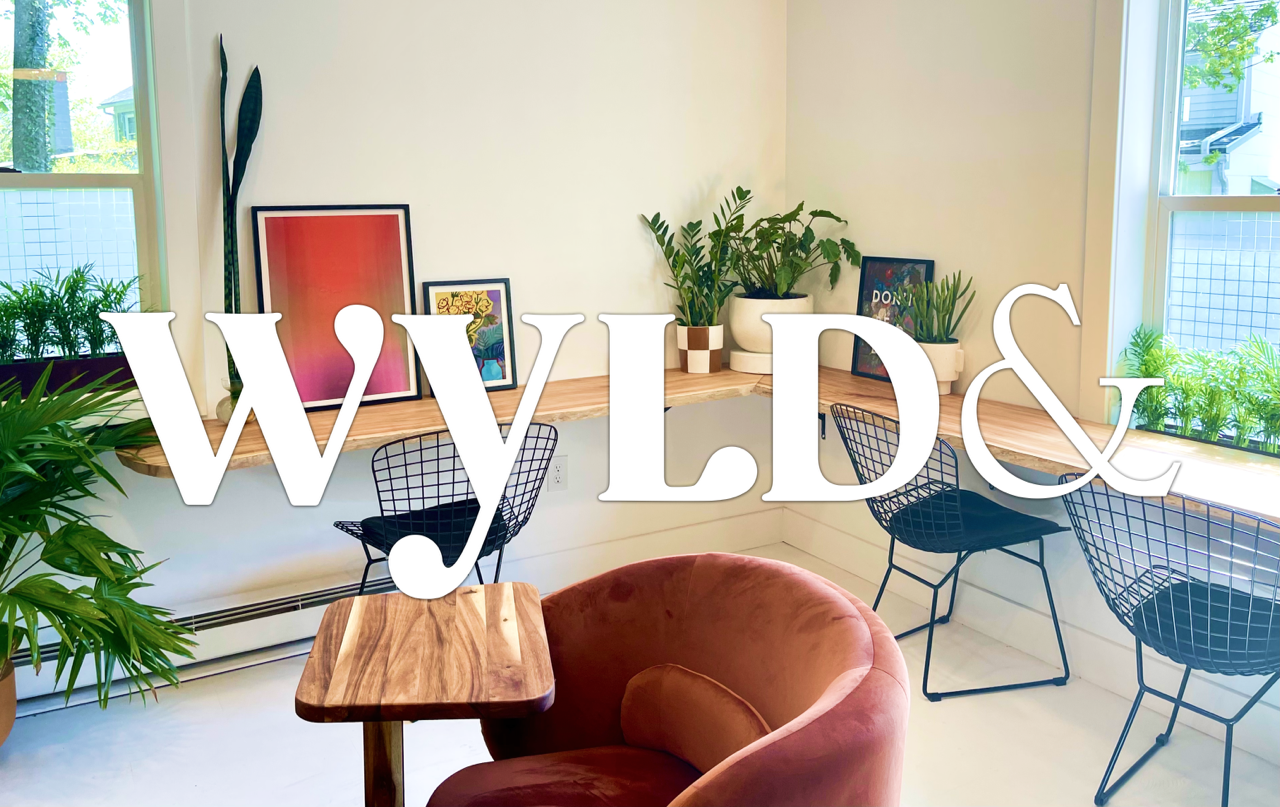
How inclusive is the design industry in 2024?
I do think there’s positive momentum… but we have a considerable way to go. What I absolutely love is that the “traditional” routes into the industry are being blurred and broadened at such a rapid pace. Not only are there part-time crash courses and certificate programs aplenty across a wide variety of specialties now, so that an expensive 4 year degree program isn’t a mandatory requisite, but there are also SO many more open source, free creative cloud tools and resources online now, and this breaks down the previous paywall around some of the fundamental tools that are required to play on a level field.
I’m also pumped on the drive and creativity of the “digital native” youth who are fearless in their content creation, embracing creativity of a timely concept over perfection of execution, relying on humor and candor to land a message, and the speed with which they are churning out new content – often catching the attention of global brands and spurring whole new micro-trends as a result. The definition of “craft” is rapidly being redefined and broadened and its brilliant to see that, as a result, there’s more non-traditional and accessible paths into becoming a creative content maker to be reckoned with.
What do you think the industry needs to improve?
Trust. If you’re vetting a creative partner enough at the forefront, you’ve got to have the ability to hand the reigns over to them during the actual creative process itself, for the best result. We each bring our own niche set of specialist skills to a production, and I think that having the ability to trust the creative integrity of each team member’s input is so hugely important. This is not to say we shouldn’t be questioning things, but allowing space for a bit of uncontrolled, unplanned creative weirdness is the thing that sets apart a good execution from a legendary one.
What are your favourite tools?
Figma, Canva, and Slate. And does Spotify count? I’m nothing without a good playlist in the background.
What’s your dream project/dream client?
I think it’s perhaps my growing up in the 80s and the unquestionable power over me that Tony the Tiger had that makes fast moving consumer goods brands the holy grail to me – your cereals, your waffles, your grocery store aisle products. I love that this specific sector of products really does carry the challenge of communicating effectively to both a parent/household buyer and child audience at the same time – because you find me a single, solitary parent who, if their child is in the middle of the grocery store having a total meltdown if you’re going to refuse them the cereal laden with multiple unpronounceable ingredients, doesn’t cave at least some of the time… it’s just a dynamic I find fascinating.

What career advice would you give your younger self?
There is no one “right” path to entry into our industry. And, once you’re in it, you better stay ever-curious. Our industry and our creative tools are rapidly and continuously evolving, and as long as you remain open and eager to continue learning, to putting in the time, to observing those before you and taking bits of the bests along with you, and to cultivating a good working reputation, you’re going to be just fine.

Thank you for reading 5 articles this month* Join now for unlimited access
Enjoy your first month for just £1 / $1 / €1
*Read 5 free articles per month without a subscription

Join now for unlimited access
Try first month for just £1 / $1 / €1
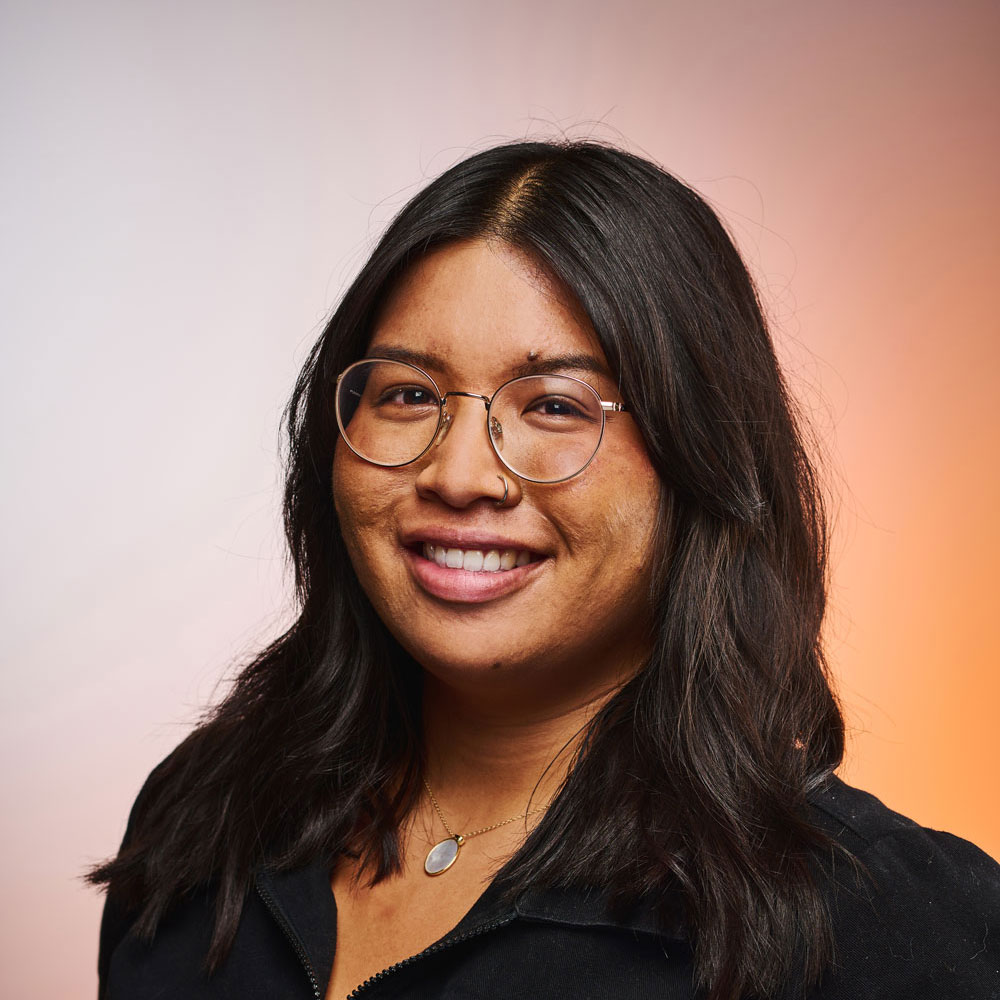
Natalie Fear is Creative Bloq's staff writer. With an eye for trending topics and a passion for internet culture, she brings you the latest in art and design news. Natalie also runs Creative Bloq’s Day in the Life series, spotlighting diverse talent across the creative industries. Outside of work, she loves all things literature and music (although she’s partial to a spot of TikTok brain rot).
